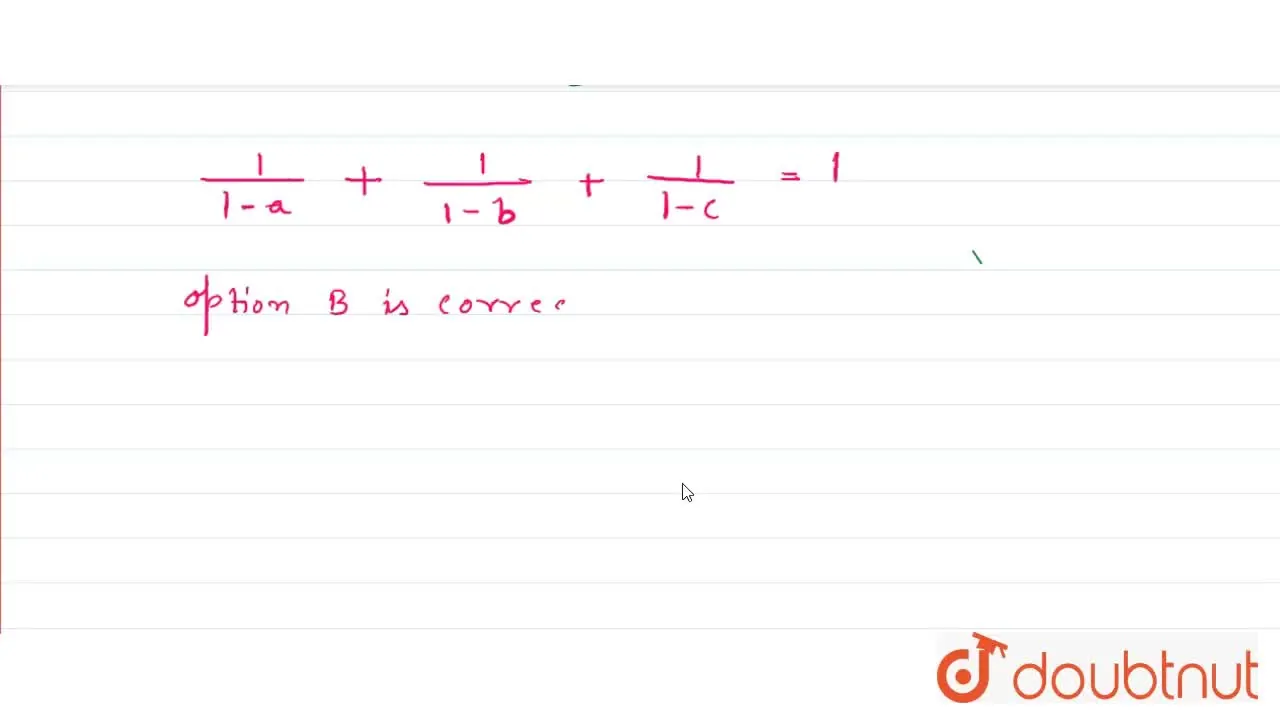If the lines ax+y+1=0,x+by+1=0, and x+y+c=0(a,b,c being distinct and different from 1) are concurrent, then (11−a)+(11−b)+(11−c) is (a) 0 (b) 1 1(a+b+c) (d) none of these
Step by step video & image solution for If the lines a x+y+1=0,x+b y+1=0, and x+y+c=0(a , b , c being distinct and different from 1) are concurrent, then (1/(1-a))+(1/(1-b))+(1/(1-c)) is (a) 0 (b) 1 1/((a+b+c)) (d) none of these by Maths experts to help you in doubts & scoring excellent marks in Class 11 exams.
Related Playlists
Similar Questions
If the lines ax+y+1=0,x+by+1=0andx+y+c=0(a,b,c being distinct and different from 1) are concurrent, then prove that 11−a+11−b+11−c=1.
View SolutionIf the lines ax+y+1=0,x+by+1=0 and x+y+c=0(a,b,c being distinct and different from 1) are concurrent, then prove that 11−a+11−b+11−c=1.
View SolutionIf the lines ax+y+1=0,x+by+1=0andx+y+c=0(a,b,c being distinct and different from 1) are concurrent, then prove that 11−a+11−b+11−c=1.
View SolutionIf the lines ax+y+1=0, x+by+1=0 and x+y+c=0 (a,b and c being distinct and different from 1) are concurrent the value of aa−1+bb−1+cc−1 is
View SolutionIf the lines ax+by+c=0,bx+cy+a=0andcx+ay+b=0(a,b,c being distinct) are concurrent, then
(A) a+b+c=0
(B) a+b+c=1
(C) ab+bc+ca=1
(D) ab+bc+ca=0View SolutionIf the lines ax+2y+1=0,bx+3y+1=0andcx+4y+1=0 are concurrent, then a,b,c are in (a). A.P. (b). G.P. (c). H.P. (d). none of these
View Solution(lim)x→0|sinx|x is a. 1 b . -1 c. 0 d. none of these
View SolutionThe straight lines 4ax+3by+c=0 , where a+b+c are concurrent at the point a) (4,3) b) (14,13) c) (12,13) d) none of these
View Solutiona,b,c are distinct real numbers not equal to one. If ax+y+z=0,x+by+z=0,andx+y+cz=0 have non trivial solution, then the value of 11−a+11−b+11−c is equal to a.1 b. −1 c.zero d. none of these
View SolutionIf the lines ax+y+1=0,x+by+1=0 and x+y+c=0 are concurrent (a≠b≠c≠1) , prove that 11−a+11−b+11−c=1 .
View Solution


